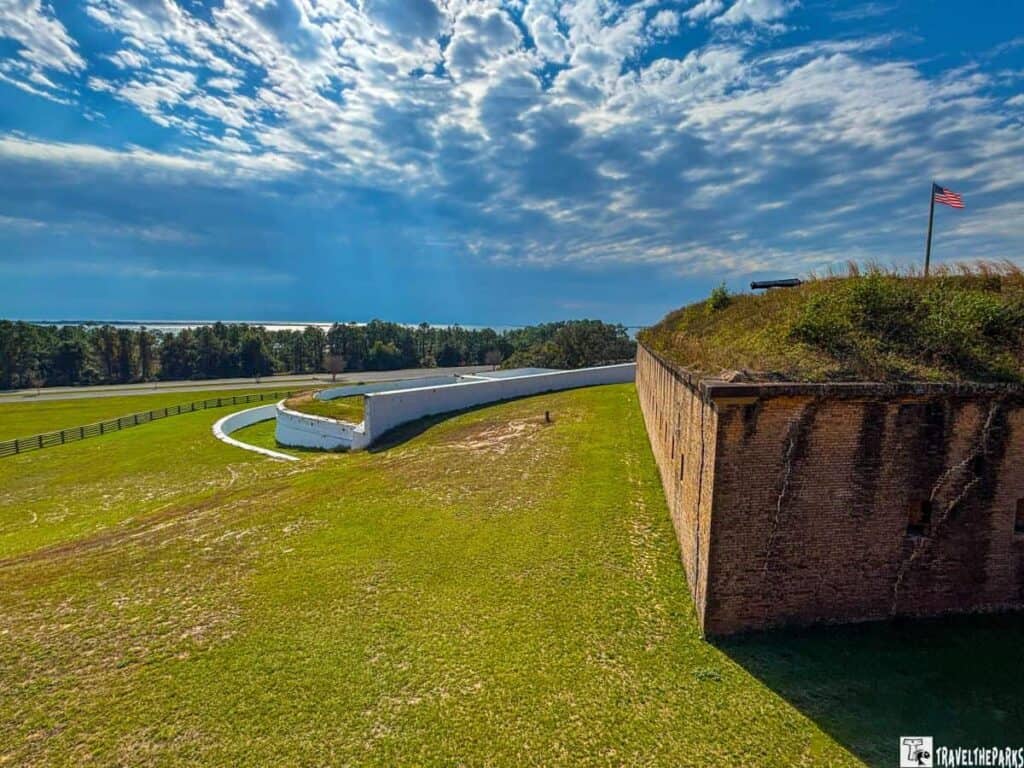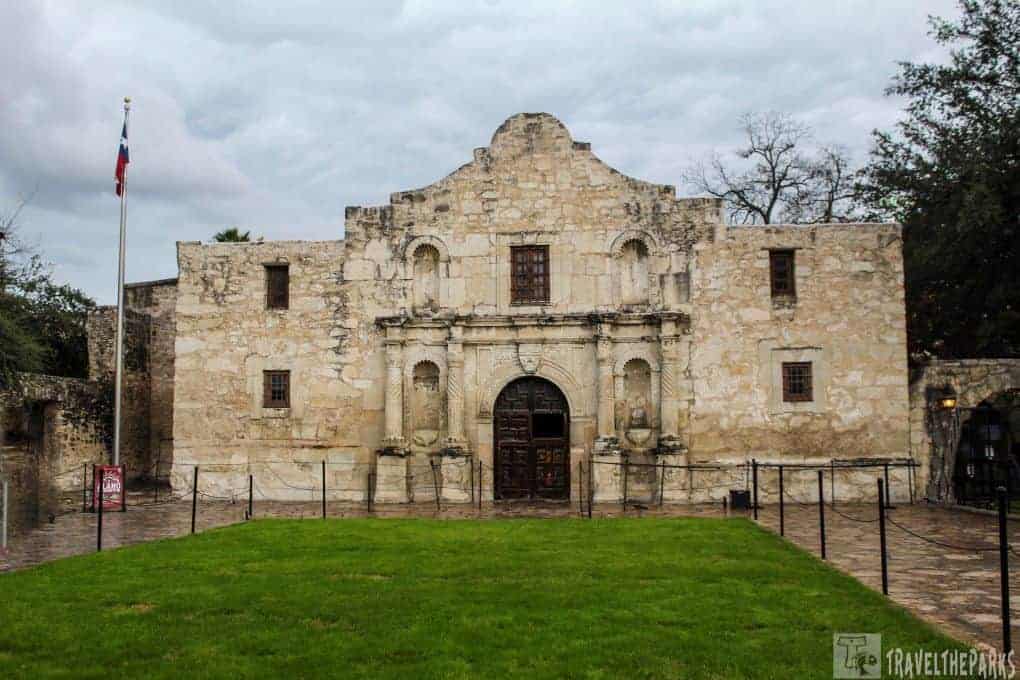This National Preserve is so worth your time. Why visit the Big Cypress National Preserve? Well, it is so closely linked to Everglades National Park. Most visitors do not even realize that Big Cypress is a separate entity altogether and covers 2,400 square miles. Congress created the preserve in 1934 to protect the flow of fresh water in Southern Florida that flows through the park to the Everglades and the Ten Thousand Islands before emptying into Florida Bay. Setting aside the 729,000 acres to protect the vital habitat that is crucial for many species, including the endangered Florida Panther. Five ecosystems are protected- Hardwood hammocks, Pinelands, Open Prairies, Cypress Domes, and Mangrove Estuaries.
This post may contain affiliate links, meaning if you purchase something through one of these links, we may earn a small commission at no extra cost to you! Read the full disclosure policy here.
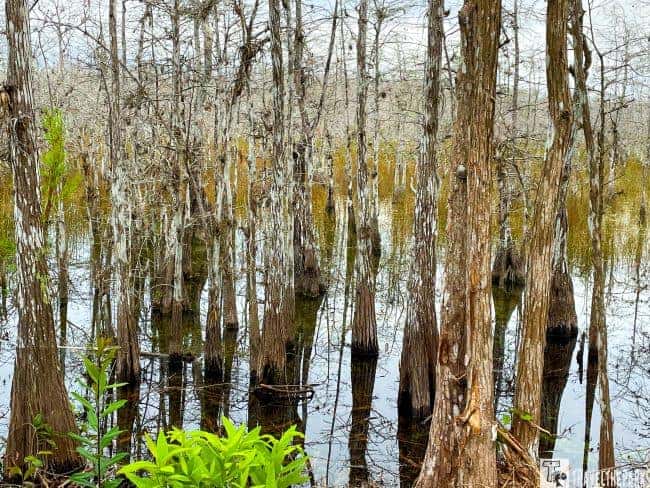
Table of Contents
Why Visit Big Cypress National Preserve: An Introduction
Completed in 1924, there is limit access to the National Preserve, bordered on the north by I-75 (Alligator Alley) and to the south the Tamiami Trail (U.S. 41). The Tamiami Trail is the primary access to the Big Cypress National Preserve. There is no entrance fee to visit Big Cypress. The difference between a National Park and a National Preserve is it allows fishing, hunting, canoeing, kayaking, camping, off-road vehicles (ORVs), and boating with permits. With lots of outdoor activities just a few hours’ drive from Orlando, Big Cypress has plenty to offer everyone, whether you are an avid hiker, adventurer, angler, hunter, or simply enjoy the great outdoors.
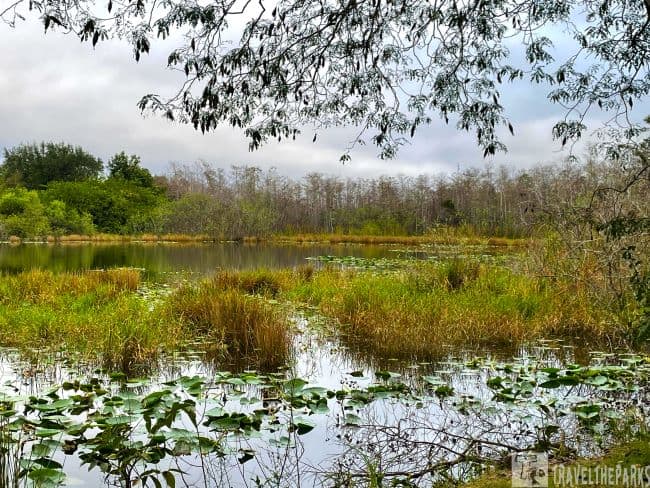
Plan Your Route to Big Cypress National Preserve
The most convenient way to access Big Cypress is by car. The park is located along the Tamiami Trail (U.S. Highway 41) in southern Florida. If you’re coming from the east, you can take Interstate 75 (Alligator Alley) and exit onto State Road 29, which leads to the park. If you’re traveling from the west, you can follow Tamiami Trail (U.S. Highway 41) eastward. The park has parking areas and designated entrances along the Tamiami Trail.
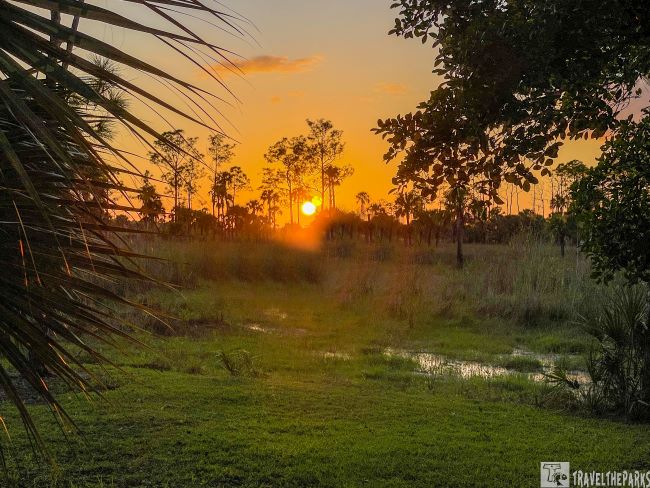
Driving along the Tamiami Trail, the landscape reminded me of what Florida must have been like when people first settled here. There are many places to stop in the preserve and walk on trails or meandering boardwalks to explore the freshwater swamp. Take the time to stop and enjoy the journey. You will not see the best the preserve offers at 60-miles per hour. There’s a certain beauty in this swampy preserve.
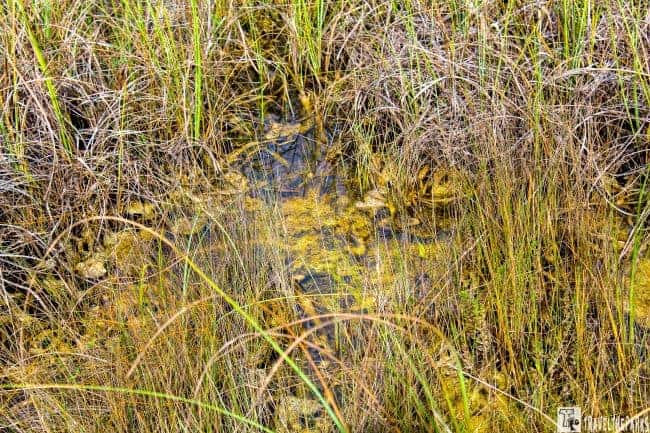
Essential Things to Know for Exploring Big Cypress National Preserve
- Operating Hours: The preserve is open 24 hours a day, 7 days a week.Visitor centers typically open 9:00 AM – 4:30 PM (check seasonal changes).
- Entrance Fees: No entrance fee is required to visit the preserve. Some special-use permits (e.g., for off-road vehicles or hunting) may require fees.
- Pet Policy: Pets are allowed in developed areas, campgrounds, and on some trails. Must be on a leash (6 feet or shorter) and never left unattended.
- Best Time to Visit: Dry Season (Nov–April): Best time for hiking, wildlife viewing, and scenic drives. Wet Season (May–Oct): Expect high heat, humidity, and possible flooding on trails.
- Road Conditions: Some roads, especially Loop Road, may be unpaved or impassable during the wet season. Always check current conditions at the official park website before heading into remote areas.
- What to bring essentials such as refillable water bottle, snacks, insect repellent, sun protection, and appropriate outdoor gear for hiking or other activities you plan to engage in within the park. Binoculars and a camera are a great addition to observing and photographing wildlife. If you plan on hiking wet trails, have waterproof or wading shoes, long pants, and wear long-sleeve shirts.

Once you’ve arrived at Big Cypress National Preserve, be sure to stop by the visitor centers, such as the Big Cypress Swamp Welcome Center or the Oasis Visitor Center, to gather information, obtain trail maps, and get the latest updates on park conditions and regulations. Click here to get a map of the park. I always laminate our maps to keep them from getting wet, and we often reuse them.
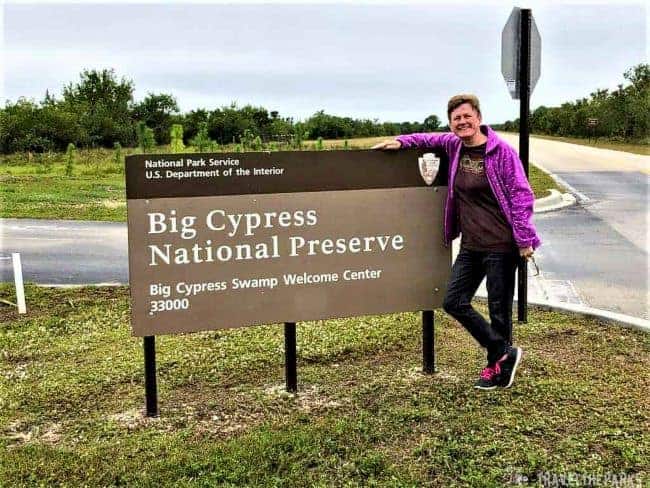
Big Cypress Welcome Center: A Must-Visit Destination in Big Cypress National Preserve
If you’re planning a trip to Big Cypress National Preserve, make sure to include a visit to the Big Cypress Welcome Center on your itinerary. Located off the Tamiami Trail (U.S. Highway 41), this visitor center serves as a gateway to the wonders of the preserve and provides a wealth of information and resources for visitors.
The Welcome Center is open every day, except for Christmas Day, from 9 AM to 4:30 PM. They designed the building with renewable resources and energy efficiency considered. The Welcome Center has indoor and outdoor exhibits and educational displays. Inside the Big Cypress Swamp Welcome Center,you can find information, exhibits, and restroom facilities. The exhibits offer an educational experience that deepens your understanding of the preserve’s importance and conservation efforts.
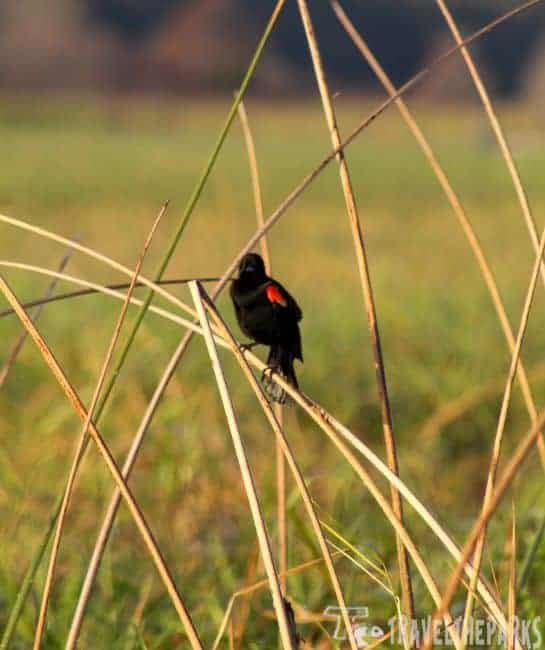
Outside the center is a boardwalk along the back of the facility has a few educational signs on what flora and fauna frequent the canal waterway. During the cooler months of the year, manatees frequent these warmer waters. We saw three alligators, two manatees, and a variety of birds, such as blue herons, egrets, and a few anhingas. There were quite a few giant invasive common plecos in the canal. However, it was peaceful and pleasant to spend some time there just observing nature. The Welcome Center has public restrooms, a small book/souvenir shop, and a bottle refill station.
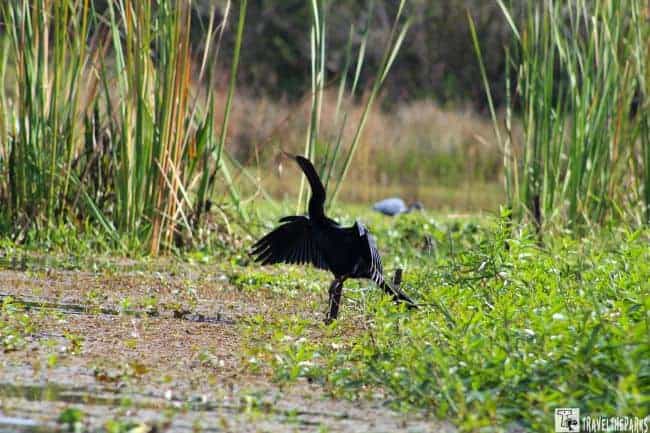
Rewarding Visit at the Oasis Visitor’s Center
A definite must stop when traveling along Highway 41 through the Everglades. The Oasis Visitors Center is on the eastern end of the Tamiami Trail, a few miles north of Shark Valley Visitor Center, in Everglades National Park. The center had been a part of a private airport before being purchased by the National Park Service in the 1960s.
The center has many brochures, trail guides, ranger-led activities, and issues with off-road vehicle permits. Be sure to watch a 20-minute orientation film (the same video at the Welcome Center), before walking the elevated boardwalk. Alligators of all sizes line the banks at the edge of the canal. There is an outstanding display about the Florida Panther. The visitor center has clean restrooms, a bookstore, and a bottle refill station.

The visitor center’s gift shop provides an opportunity to browse and purchase a range of items related to Big Cypress National Preserve. You can find books, field guides, maps, apparel, and souvenirs that serve as mementos of your visit or enhance your understanding of the park.
The southern terminus of the Florida Trail is at the visitor center. This is a long-distance 1300-mile) hiking trail that passes through Big Cypress National Preserve. The Western Corridor section of the trail offers a wilderness experience, taking hikers through cypress swamps, prairies, and hardwood hammocks. This section of the trial is more challenging and can be wet. It requires preparation, including backcountry permits.

The Oasis Visitor Center is the starting point for several trails within Big Cypress. Trails like the Pine Island Trail and the Cypress Dome Loop Trail allow you to explore different habitats, including pine forests and cypress domes. These trails range from 0.4 to 2.5 miles and offer diverse experiences.
Roadside Parks in Big Cypress National Preserve
Big Cypress National Preserve is home to several roadside parks that offer convenient stops for visitors to enjoy the natural beauty and diverse ecosystems of the preserve. These roadside parks provide opportunities for scenic views, wildlife spotting, picnicking, and short walks. Here are some of the notable roadside parks in Big Cypress:
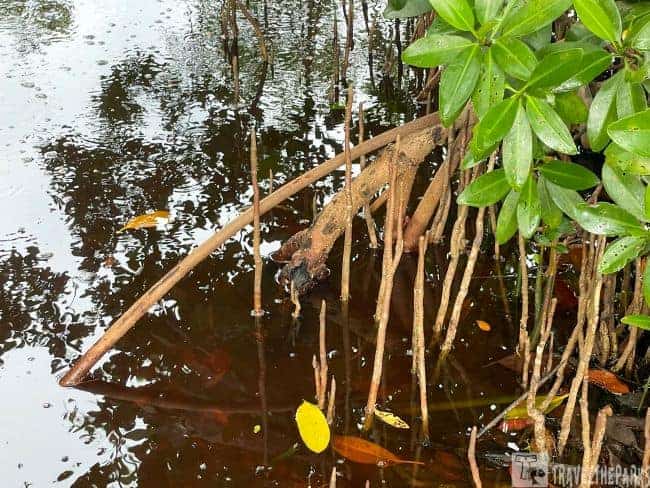
Wander through the Cypress Trees on The Kirby Storter Boardwalk
Despite its unassuming appearance, this roadside stop has it all. There is a long wooden boardwalk that winds through the park, allowing you to see the surrounding area and elevated over the Cypress swamps. An easy 1-mile walk out and back a whole new world awaits you. The park is at the midpoint on the Tamiami Trail. We did this walk on Christmas morning. It was serene walking the trail transitioning from grassland to dwarf cypress and pond apple trees before ending at a platform where bromeliads hang from a mature cypress forest. Sit on the benches and listen to the birds. There is also a small chickee shelter if the threat of rain is imminent. The park has picnic tables, restrooms, and interpretive signs that provide information about the surrounding environment.
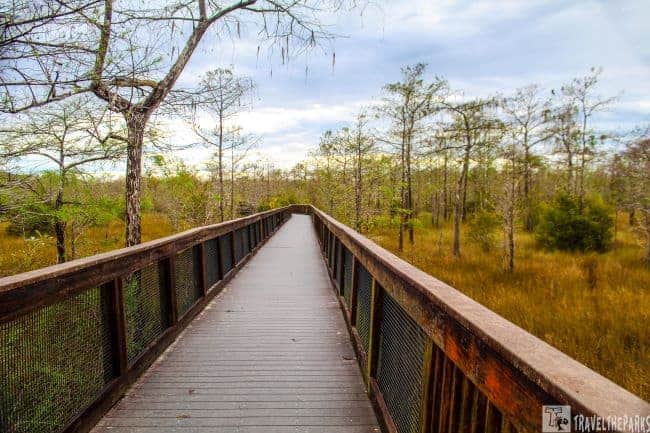
Enjoy a Picnic Lunch at H.P. Williams Roadside Park
In Ochopee H.P. Williams Roadside Park is named for Homer P. Williams, an engineer during the construction of the Tamiami Trail. This is a great place to take a break and stretch your legs while driving along US-41. The park has a short 200m boardwalk where we saw more alligators, soft-shelled turtles, and lots of different fish species. This was a pleasant place to have a picnic. Shade covered the picnic area, and the crows watched us eat lunch. The park has vault toilets and ample parking. If you want to see gators, this is the spot. In colder weather, the gators huddle together in the water.
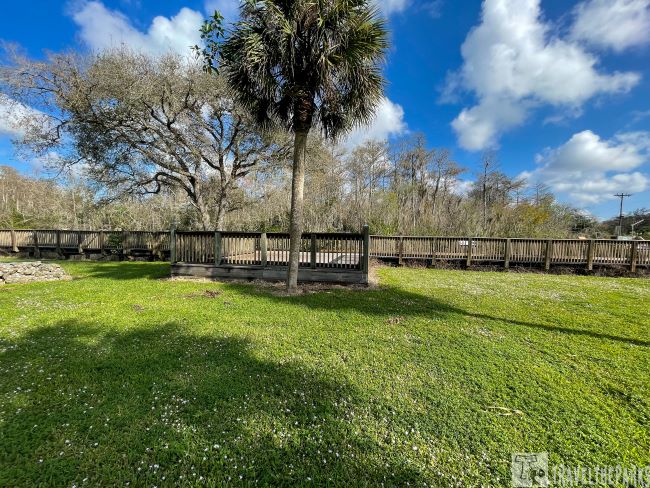
Although not officially part of the Big Cypress National Preserve, Collier-Seminole State Park– is next to it and offers recreational opportunities. The park features camping facilities, hiking trails, and a scenic boat tour through the mangrove forests of the Blackwater River. It’s a great option for a day trip or overnight stay near Big Cypress. The Royal Palm Hammock Trail is a 6.5-mile trail is a loop that takes you through a diverse ecosystem of hardwood hammocks and wetlands. It offers opportunities for birdwatching and wildlife spotting.
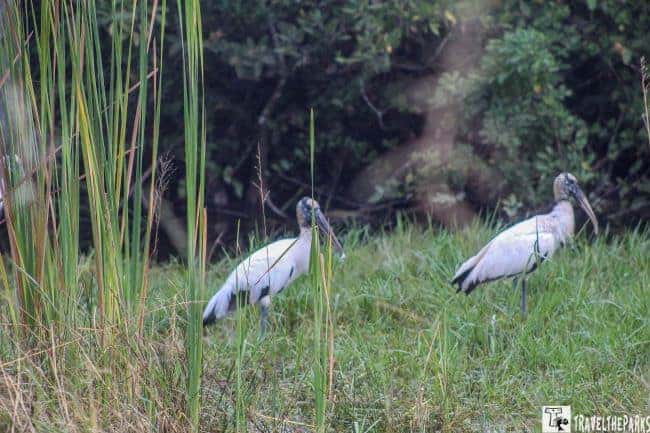
Exploring Big Cypress National Preserve: Unforgettable Activities Worth Trying
When visiting the Big Cypress National Preserve, you’ll be immersed in a remarkable natural environment that offers a plethora of activities and experiences. Here are some of the best things to do in the preserve that are truly worthwhile adding to your itinerary:
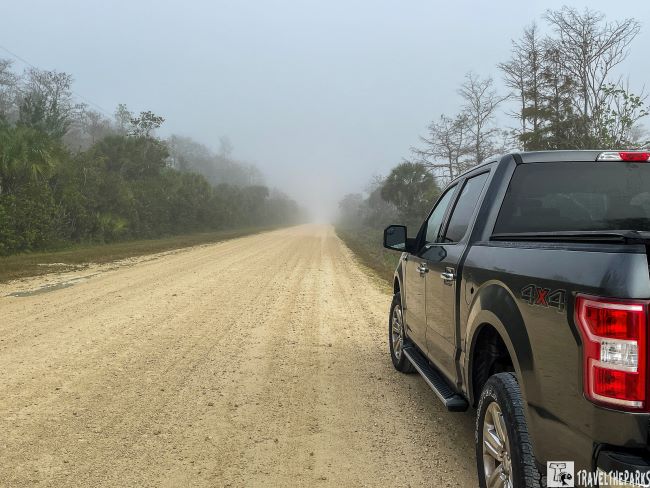
Drive Through the Heart of the Park on the Loop Road Scenic Road
Early in the park’s development, this 27-mile scenic loop road was under consideration as the route of the Tamiami Trail. Today, the Loop Road Scenic Drive is a must-visit attraction within the Big Cypress National Preserve. This iconic road offers a picturesque journey through the heart of the preserve, immersing you in the beauty of the wilderness. This mostly gravel road gives you the opportunity to drive through the glades at a much slower pace. You will drive through many zones, including hardwood hammock, cypress swamp, cypress domes intersected by drainage canals. Stopping at the small bridges, you will see myriad birds, turtles, and plenty of alligators in these small canals. You may also spot the elusive Florida panther if you’re lucky. Absolutely incredible!
PRO Tip: It’s important to note that the Loop Road is a narrow, two-lane gravel road, and certain sections may be unpaved and rough. Take it slow, be mindful of oncoming traffic, and be prepared for occasional potholes or bumps.
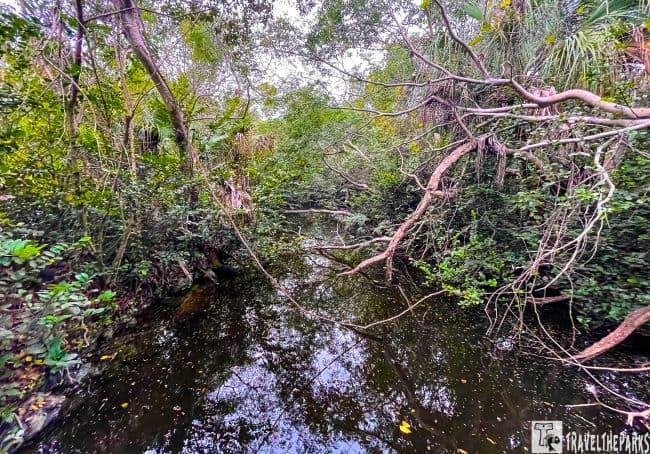
Scenic Turner River, Upper Wagonwheel & Birdon Road Loop Drive
A 17-mile scenic drive along a very dusty gravel road. The Scenic Turner River, Upper Wagonwheel, and Birdon Road Loop Drive is another captivating route within the Big Cypress National Preserve that offers a unique and diverse experience. Our journey begins on Turner River Road, a picturesque route that takes you along the banks of the scenic Turner River. The gravel road impedes the natural flow of the Turner river. Culverts and dams installed in the late 1988 prevent the proper flow of water starving much of the Copeland prairie. Water-loving Cypress trees dominate much of the landscape, although many were cut down during construction of the road. However, there are beautiful views of the river, surrounded by lush vegetation and cypress trees.
As you continue on the loop drive, you’ll turn onto Upper Wagonwheel Road. This road winds through pine forests and open prairies, providing a contrasting landscape to the river. The stands of longleaf pine and saw palmetto signifying higher ground. Take in the expansive views and keep an eye out for wildlife that may be grazing in the prairie areas. Deer, panther and bear are sometimes seen in the early or later hours of the day.
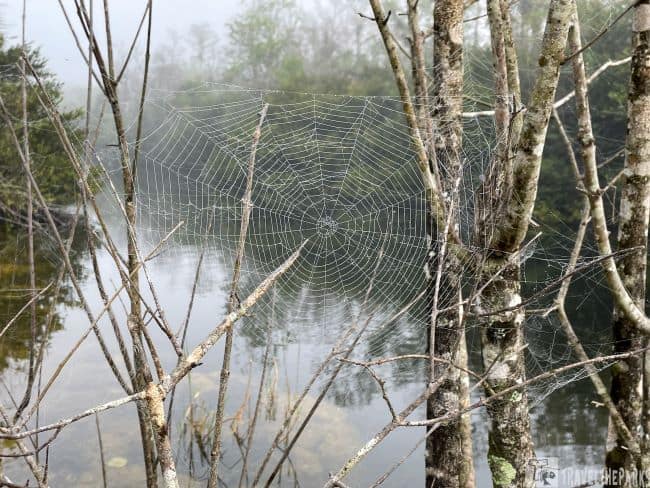
PRO Tip: I would advise not to follow other vehicles, or go early when the dew coats the gravel. Be sure to pull over at designated spots or use the roadside pull-offs to observe and photograph wildlife from a safe distance.
Roadside Stops and Hiking Trails on Turner Road Loop
Along the loop drive, you may come across roadside stops or small parking areas where you can pause, stretch your legs, and enjoy the surroundings. Some of these stops may also provide access to hiking trails, allowing you to explore on foot and delve deeper into the preserve’s natural wonders.
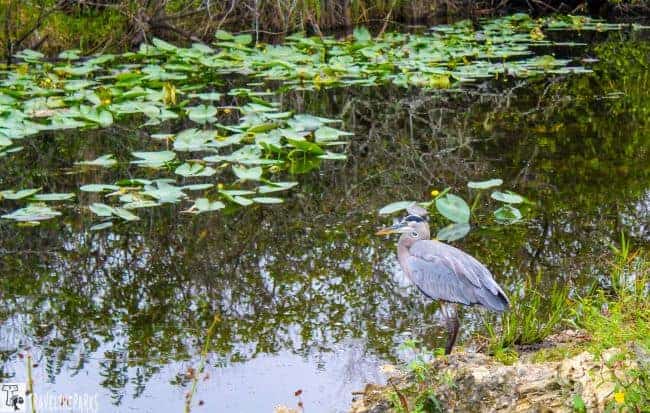
Birdon Road offers scenic views of cypress swamps and marshes, showcasing the diverse ecosystems of the preserve. Wildlife encounters are common along this road, so be prepared to spot alligators, wading birds, and possibly even the elusive Florida panther.
The limestone gravel on this road has a tendency to create a huge blinding cloud of dust. I was glad that we did this drive on a cool, damp day. We stopped at many culverts along the way to fish and watch for migrating birds. In the winter months, white pelicans, or roseate spoonbills, frequent the canals and grassland prairie. The dominate predator American Alligator is ever present in the marshes along the road. A few times we spotted gators catching rays on the side of the road.

Periphyton-Life Blood of the Cypress National Preserve
A bit off the beaten path canals parallel the road. Inhabitants of the canals are birds, alligators, and other aquatic life. As you drive, you will see Sawgrass marsh with wet prairies, sloughs, and tree islands. It fills this vast grass prairie with Periphyton, which is a complex mixture of algae, cyanobacteria, heterotrophic microbes, and detritus that attaches to submerged surfaces in most aquatic ecosystems. To me, it looks like a fluffy yellow-brown material that coats the grasses below the surface of the water. The periphyton is a vital food source for snails, frogs, and other marine life. Without the periphyton, the food web would collapse. If you have the time to drive this road, stop often to take pictures, and there are many places to cast a line and fish.

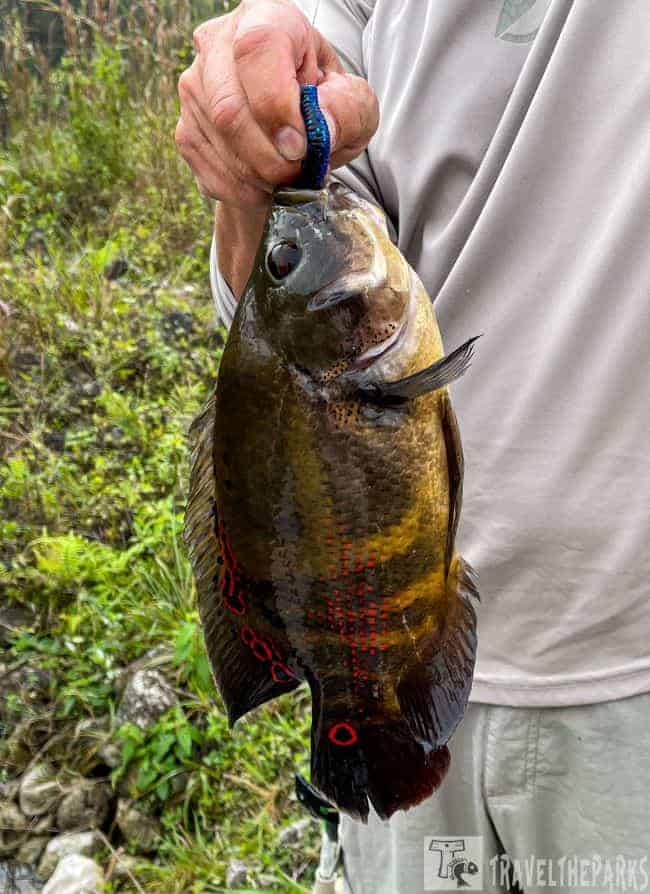
Noteworthy Campgrounds in Big Cypress National Preserve
There are six campgrounds in the national preserve. ONLY Midway is open year-round and has electrical hookups for RVs (26 sites). This is a very popular campground in winter. We made reservations for camping through www.recreation.gov. Open August 15-April 15 campgrounds include Bear Island (40 sites), Burns Lake (15 sites), Gator Head (9 sites), Mitchell Landing (11 sites) Pink Jeep (9 sites), and Monument Lake (30 sites). Enjoy the tranquility, explore the surroundings, and create lasting memories in this beautiful and remote camping destination.
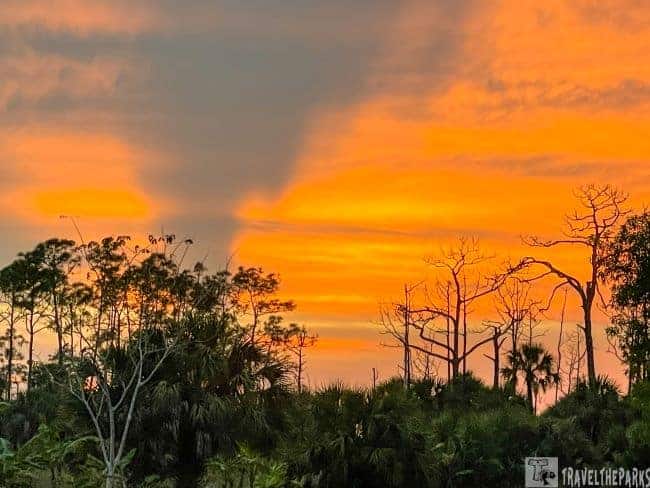
For a true wilderness experience, consider backcountry camping in Big Cypress. Obtain the necessary permits and venture into the remote areas of the preserve to camp under the starry night sky and wake up to the sounds of nature. Be prepared with proper equipment and knowledge of Leave No Trace principles.
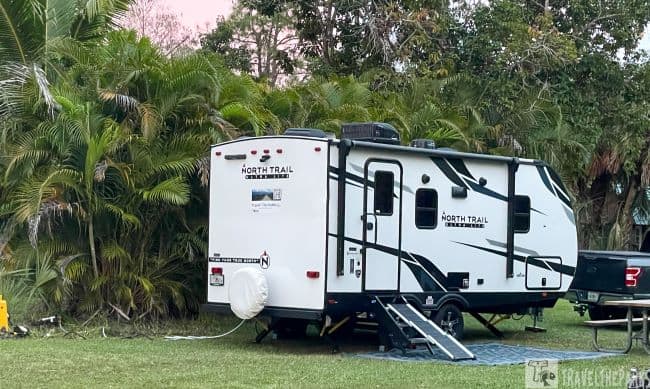
Trail Lake Campground in the Heart of the Preserve
Looking for full service RV camping? Trail Lakes has been around since the 1960s. Trail Lakes Campground is a rustic and picturesque camping destination in the heart of the Big Cypress National Preserve. The campground is located off the Tamiami Hwy at the Skunk Ape Headquarters. Near the scenic Loop Road, this campground offers a tranquil and immersive experience in the wilderness. By camping at Trail Lakes Campground, you’ll have the opportunity to disconnect from the outside world and immerse yourself in the natural wonders of the Big Cypress National Preserve.
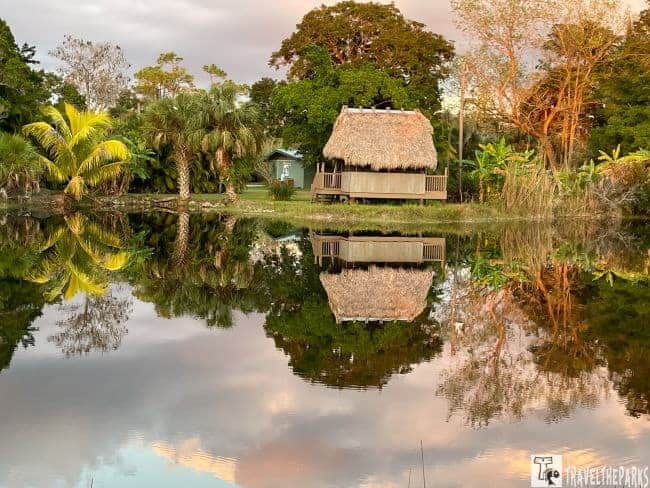
We enjoyed 2-nights here. The staff was very welcoming and helpful throughout our stay. If given the opportunity, we would visit again. They have campsites with 20,30 and 50 Amp service and water with some full hook up. Each site has a fire ring and a picnic table. Most sites are level and private. The restrooms need to be improved. We used our own travel trailer for showers. At night, we did not hear the highway, even with the proximity, and we never heard any noise from the other campers. Pleasantly surprised at Trail Lakes Campground and would stay again!
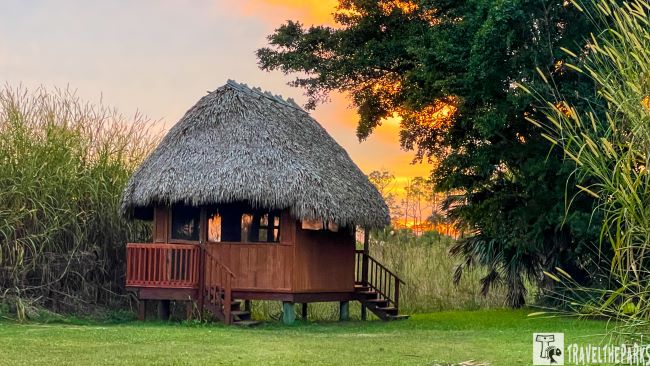
Additional lodging in cabins or the chickee huts are a unique experience. They also have a convenient Camp/gift shop and don’t miss the cool reptile zoo! It’s free for campers. The night skies at Trail Lakes are particularly breathtaking, offering stargazing opportunities away from city lights. I must admit, sunsets were simply breathtaking here!
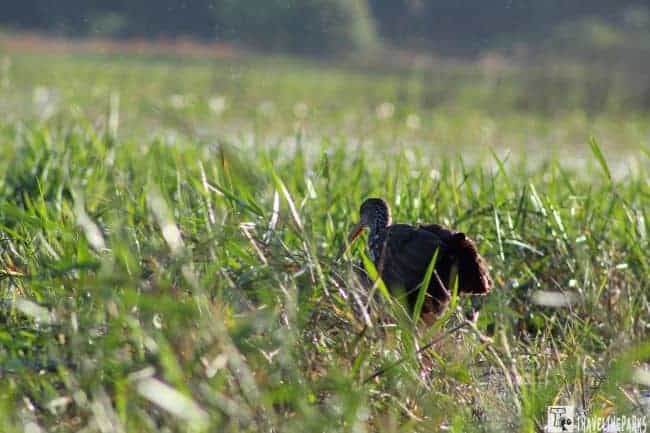
Best Hiking Trails in Big Cypress National Preserve
The preserve has many diverse habitats, and different trails give you a different insight into the park. The varied ecosystems and unique habitats are worth hitting the trails to learn more about Big Cypress. Big Cypress National Preserve offers a variety of hiking trails that allow visitors to explore the unique ecosystems and natural beauty of the area. Here are some of the best hiking trails in Big Cypress:
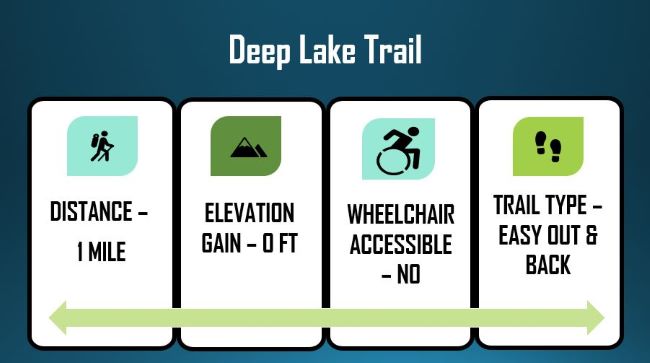
Hiking the Deep Lake Trail while Visiting Big Cypress National Preserve
The deepest lake in the park at 90 ft created by a natural sinkhole, it is a true gem at the very end of the trail. To find the trail is difficult, there is no signage on the road. It is located off Highway 29, behind the fire station. Park behind the station, near the gate.

As we hiked the Deep Lake Trail, the natural beauty of the preserve surrounds you. The unimproved trail can be muddy as you traverse through a hardwood hammock, sometimes ankle-deep water covers the trail. Glad I had on my waterproof boots. This trail is in the heart of panther country, however, we did not see one today. The trail continued to meander through towering cypress trees, draped with Spanish moss, and offered us picturesque views of the tranquil Deep Lake at the end. The lush vegetation and diverse plant life create a serene and captivating atmosphere throughout the hike.
Big Cypress is home to a variety of protected species, such as the Florida panther, black bear, wood stork, bald eagle, and snail kite. They spared many of the Bald Cypress trees in the lake from logging in the early 1800-1900s. Alligators cruise the lake and many birds, including Osprey hunt for a meal. I regret not taking our fishing gear on the trip.
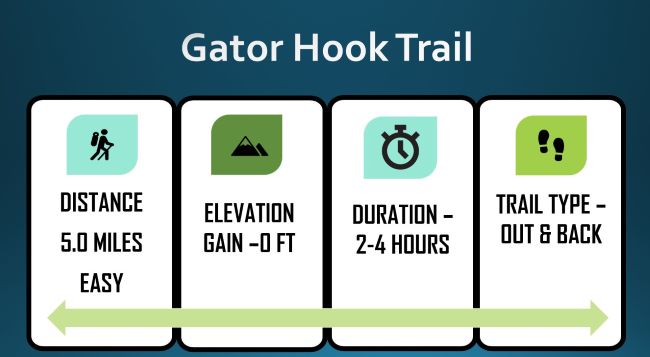
Stomping through the Gator Hook Tail in Big Cypress
This 7.6-km trail is accessible off Loop Scenic Road. It takes you through a variety of habitats, including wet prairies, cypress swamps, and pine forests. The trial offers a moderate level of difficulty and showcases the diverse ecosystems of Big Cypress. The trail may have sections that are wet and muddy, adding to the excitement and challenge of the hike.
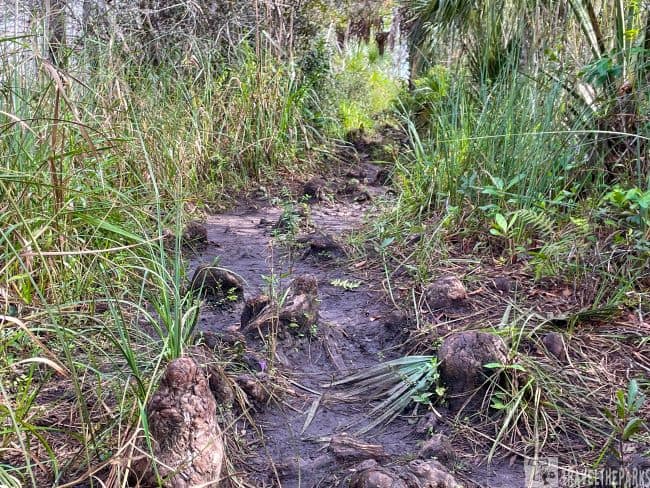
We found it was treacherous navigating the first mile of the trail, just avoiding the multitude of Bald Cypress knees. I had to keep my eyes on the ground to avoid getting tripped. The majority of the trail requires wading through water. In December, I was knee deep in water in a few places, but most of the time I was ankle deep. We traveled at a time when the water levels were higher than usual. To stay upright, I recommend trekking poles. Our fishing wader boots are just right for this trail as well.
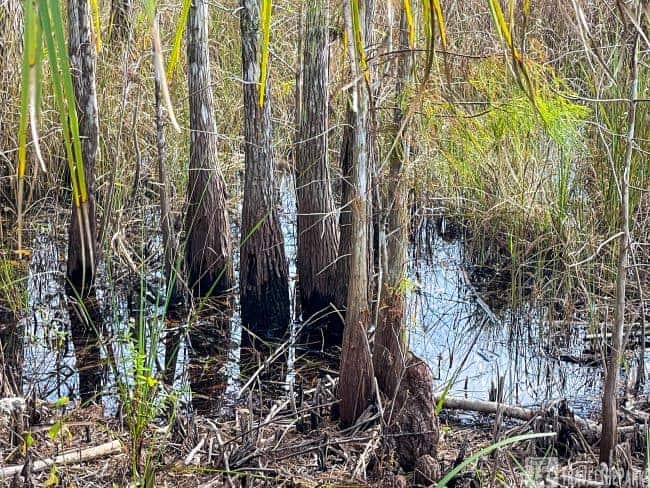
The trail is fairly easy to follow. Even with the warm temperatures, mosquitoes weren’t an issue. Earlier in the week, the weather had been quite chilly. Keep an eye out for wading birds, turtles, and other wildlife that inhabit these wetland areas.
Bring bug repellent just in case. Saw no gators, but there were plenty along the loop road at every culvert crossing. The Gator Hook Trail is an extraordinary hiking experience – definitely prepare to walk in the water!
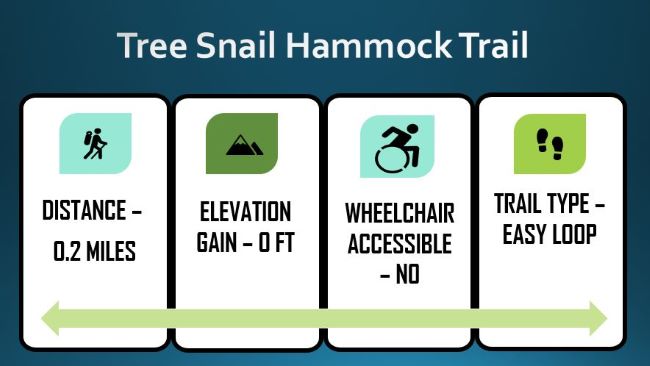
Short but Sweet-Snail Hammock Trail
The Snail Hammock Trail is a 1-mile loop trail located across the road from the Loop Road Education Center. They named it for the imperiled Florida tree snail. These snails have multi-colored shells approximately three inches long with spirals of brown, yellow, green, orange, or pink. Collectors have decimated the population. If you see one, take a picture and leave it alone.
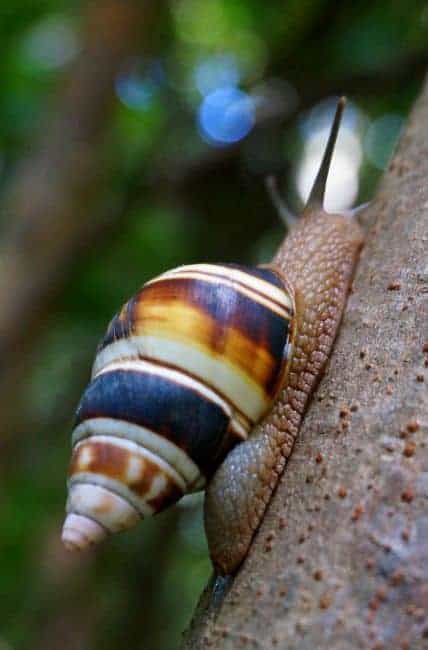
Despite its short length, the trail showcases the diverse ecosystems of Big Cypress and provides an opportunity to observe the flora and fauna of the area This is a relatively flat, well-maintained trail, making it accessible for most hikers, including families and those with mobility challenges.
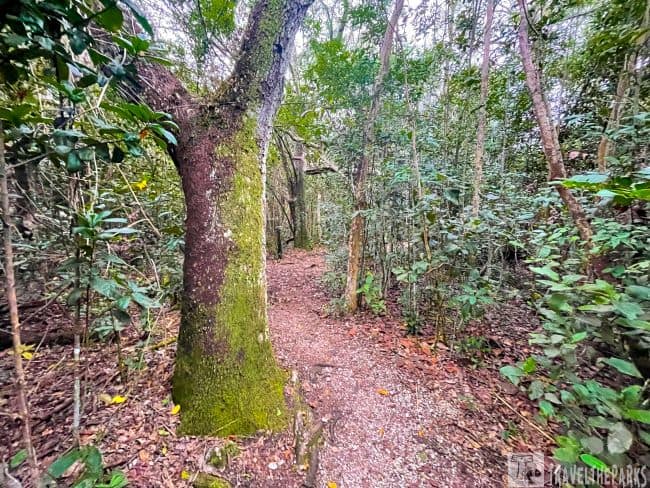
Along the trail, you’ll find interpretive signs that provide information about the surrounding environment, wildlife, and historical significance of the area. These signs offer educational insights and enhance your understanding and appreciation of the preserve’s natural and cultural resources. The Snail Hammock Trail may be short, but it packs a punch in terms of natural beauty and the opportunity to experience the unique ecosystems of Big Cypress National Preserve.
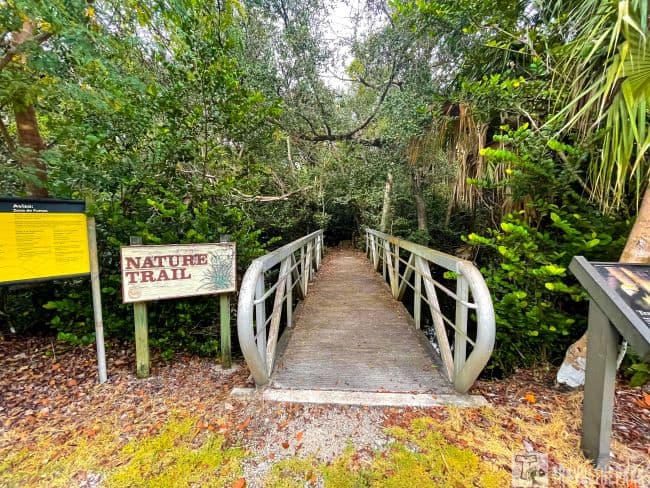
Hiking the Boardwalk on the Big Cypress Bend Trail
The boardwalk on the Big Cypress Bend Trail is a raised pathway that winds through the heart of a cypress swamp. The trail is approximately 2,000 feet long, providing an easy and accessible hiking option for visitors of all ages and fitness levels. This cypress swamp is home to a variety of unique plant species, including orchids and bromeliads, as well as an array of wildlife.
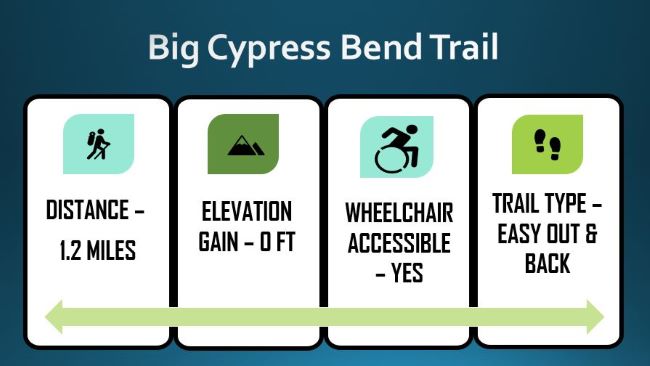
The trail boardwalk overlooks an old growth Bald Cypress hammock. Many of these trees are 100 years old. Although the trees are large, they are comparable to the Champion trees of Congaree National Park. The trail is in Fakahatchee Preserve State Park, on the Tamiami Trail East-Highway 90/41. The boardwalk is free, however; they request a donation. There is a Seminole gift shop at the start of the boardwalk. It was closed after Christmas, so I cannot say what the shop offers.

It’s Like Stepping into a Prehistoric Time
It is like stepping back in time to old Florida walking the boardwalk. There are many diverse types of flora along the boardwalk, including Royal Palms, ferns, and Pond Apple that host many rare orchids and bromeliads. The landscape reminded me of Susan Orleans’ The Orchid Thief. The boardwalk ends with a large observation deck. It fills the pool with plenty of weird anhingas, Great Blue Heron, White Egrets, Barred Owls, and Pileated Woodpeckers to see in the tree branches. Many alligators inhabit the “Gator Hole”, a large male alligator bellowed, fascinating to watch.
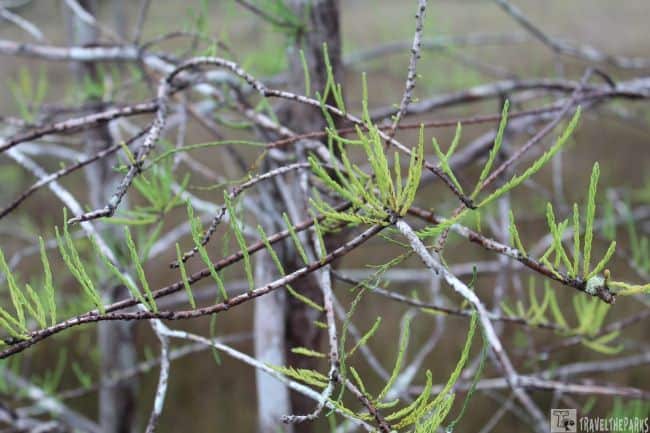
Along the boardwalk, you’ll find informative signs that provide details about the cypress swamp ecosystem, the plants and animals that inhabit it, and the cultural history of the area. Take your time to read and learn from these signs, deepening your understanding and appreciation of the preserve.
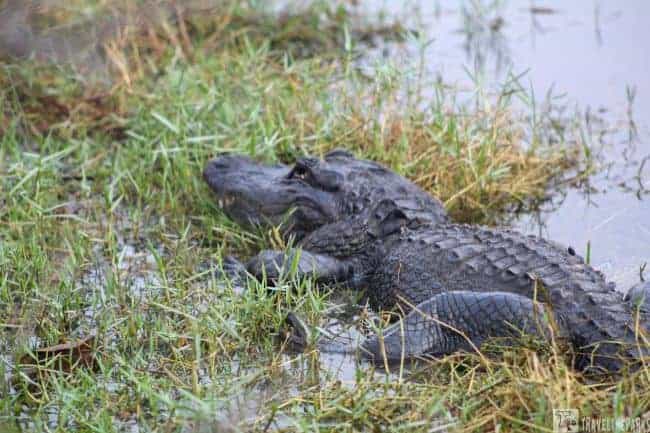
Other Hiking Trails to Consider in and Around Big Cypress:
- Turner River and Halfway Creek Canoe Trail– 23.8-mile through the best scenery in the park. It is accessible from the canoe launch on US Hwy 41 in the Big Cypress National Preserve or by launching from Chokoloskee or the Gulf Coast Visitor Center canoe launch. Abundant wildlife, varied ecosystems, and numerous spots for stretching your legs await you during your paddle!
- Fakahatchee East River Paddling Trail – The 19-mile-long Fakahatchee Island loop trail near Everglades City, Florida offers the opportunity to observe wildlife.
- Florida Trail: Tamiami Trail to I-75 – Various habitat types are featured on the trail, including hardwood hammocks, pinelands, prairies, and cypress swamps.
- Florida Trail 3: Alligator Alley to L-3 Canal – Well marked, trail takes you through a lot of unique ecosystems.
- Fire Prairie Trail – An elevated trail through the glades ends in an elevated field where you can bike, birdwatch, or hike.
- Bear Island Mountain Bike Loop-near Immokalee, Florida, this is a 20.3-mile out-and-back trail. Fairly flat follows an old logging road.
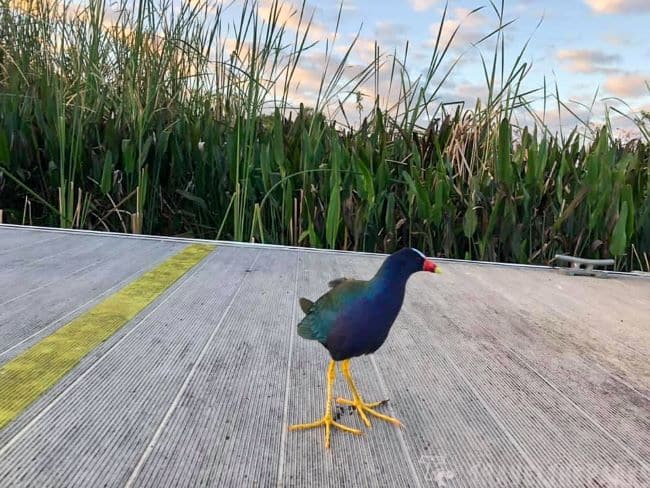
Final Thoughts on Visiting Big Cypress National Park & Preserve
Big Cypress National Preserve is known for its vast yet diverse ecosystem, encompassing cypress swamps, hardwood hammocks, prairies, and freshwater marshes. Take the time to explore different areas of the preserve and appreciate the unique beauty and biodiversity it offers.
So why visit Big Cypress National Preserve? Travelers will find it to be a very interesting experience. Enjoy your visit to the Big Cypress National Preserve and immerse yourself in the beauty and tranquility of this remarkable natural treasure. There are fewer tourists than in Everglades National Park, quiet hikes, and plenty of wildlife. Why don’t you stop here on the way to the Everglades? You won’t regret it!
Have you visited the Big Cypress National Preserve? What was your favorite activity? SHARE we would love to know what you thought!!


